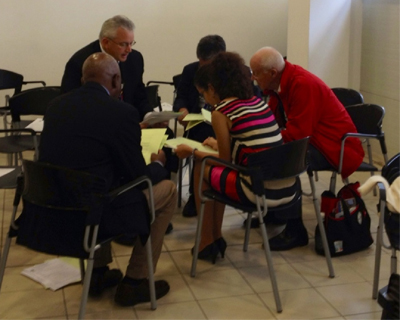How to use the FIGO Human Rights/Women’s Health Tools
1) Begin with your own healthcare and rights
With the knowledge that learning always begins from a perspective of one’s own personal experience, we encourage new users of these tools to begin with the A Checklist for Quality Care. Apply it to a personal or family instance of a healthcare encounter (perhaps one that did not have optimal outcomes) and consider how each of the rights described in the checklist were either protected or infringed by the actions of healthcare providers. Consider also how the healthcare system of the clinic or hospital contributed to those actions.
2) Use the checklist and the cases for teaching and learning
Now that you have an understanding of how the Checklist works, use it to analyse one of the case studies. Each is designed to address several human rights violations. Although each is set in a particular part of the world, the editors’ experiences are that they can occur anywhere in the world. The Five questions are embedded in the analysis and the checklist is applied as the initial analytic tool to understand how the medical circumstances and ethical/ rights issues are interdependent.
Facilitator Guides are provided for teachers. They include suggested discussion topics and resources for learning more about the clinical and rights aspects of each case. Teachers may choose to provide students with the reference list to help them analyse the case as a homework assignment or as follow-up to more in-depth study after the initial discussion.
3) Adapt the tools to your own cases
The checklist and Five questions can be adapted for use in clinical rounds, morbidity and mortality conferences, preparation for clinical practice, and a host of other opportunities for reflection on outcomes and clinical teaching. To adapt the tools to your own cases, you would:
- Outline the patient’s course of illness or injury, the treatment she received, and the outcomes;
- Review the basic science issues and clinical issues as they pertain to the case;
- Reflect upon the experience of the patient and her healthcare providers using the Checklist for Quality Care;
- Answer each of these five questions:
- What rights protections might have kept the patient safe and healthy?
- Whose responsibility was it to protect those rights?
- How did the healthcare system contribute to the outcomes?
- What simple solutions could be put into place to prevent this from happening again?
- Summarize the most important insights and make recommendations for future care.
Pictured here, a case discussion at the FIGO World Congress, Rome October 2012
The same approach of case studies used with the Checklist and Five questions for human rights and women’s health can be used for faculty development.


